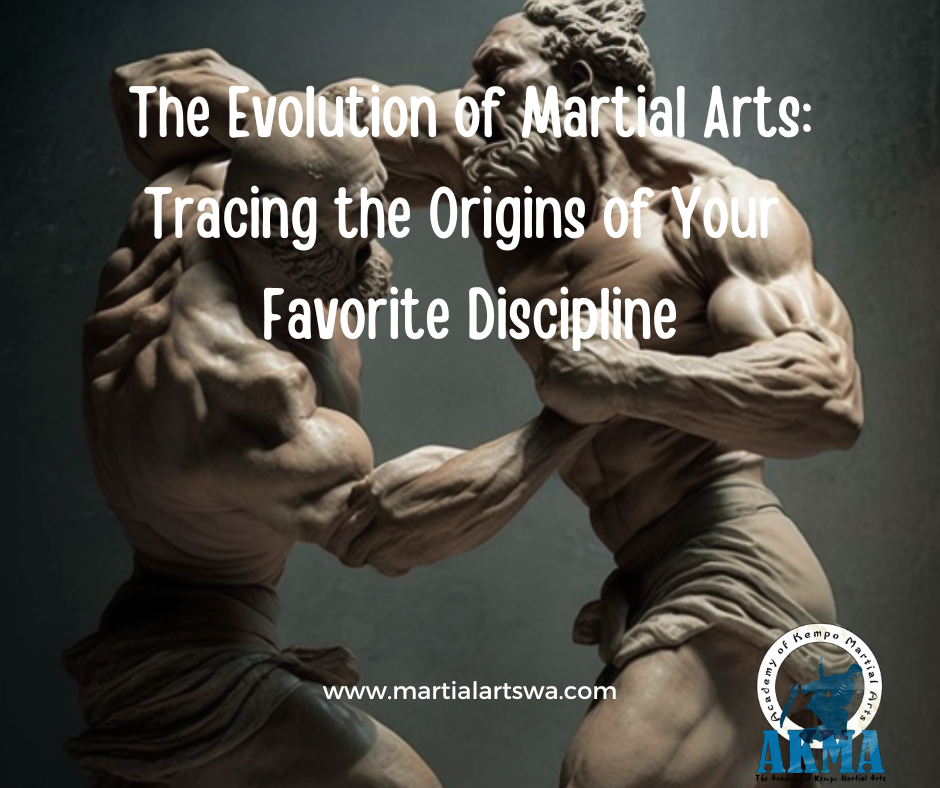
The Evolution of Martial Arts: Tracing the Origins of Your Favorite Discipline
Posted: January 24, 2023
Martial arts have been practiced for centuries, and their history and evolution are as fascinating as they are varied. Understanding the origins of your favorite martial arts discipline can deepen your appreciation for its techniques and philosophy. Additionally, tracing the evolution of martial arts can provide insights into how and why they developed in different regions and cultures. In this article, we'll take a journey through time and explore the history of martial arts, from their earliest roots to the modern-day. So, whether you're a practitioner or simply curious about the subject, let's dive into the fascinating world of martial arts history.
Section 1: Ancient Roots of Martial Arts
Martial arts have a long and rich history that dates back to ancient civilizations such as Egypt, Greece, and China. The earliest forms of martial arts were likely developed for self-defense and warfare, as humans have always faced threats and the need to protect themselves.
Boxing and wrestling were two of the earliest forms of martial arts that have been documented in ancient civilizations. In Egypt, paintings in tombs from around 2500 BCE depict bare-knuckle boxing matches. Ancient Greek texts also describe various forms of boxing and wrestling, including the sport of pankration which combined both disciplines.
These early forms of martial arts were not just for sport or entertainment. They were also used for combat and self-defense in battle. In China, martial arts were developed as a means of self-defense and also for health and wellness. The Chinese martial art of Kung Fu, for example, has its roots in the ancient art of Wushu, which was developed for both military training and self-defense.
Understanding the ancient roots of martial arts is important because it provides insight into the origins and evolution of your favorite discipline. By learning about the history of martial arts, you can gain a deeper appreciation for the techniques and principles that have been passed down through generations. It also helps you understand the context in which the art was developed and the cultural significance of the discipline.
Section 2: Cultural Influences on Martial Arts
Martial arts have been shaped and influenced by various cultural factors, including religion, philosophy, and politics. The development of martial arts was not just about physical training, but also about instilling values and beliefs. In this section, we will explore the impact of culture on the evolution of martial arts.
One of the most significant cultural influences on martial arts is religion. For instance, Buddhism and Taoism had a significant influence on Chinese martial arts. Shaolin Kung Fu, one of the most well-known styles of Chinese martial arts, was developed by Buddhist monks in the Shaolin Temple in the Henan province of China. The monks practiced martial arts to protect themselves from bandits and to improve their physical health. They also integrated Buddhist principles of compassion, humility, and discipline into their training, which eventually became a fundamental aspect of Shaolin Kung Fu.
Similarly, Taoism had a significant impact on martial arts. Tai Chi, a slow and graceful style of Chinese martial arts, was influenced by Taoist philosophy. Taoism emphasizes the harmony between the mind and body, and Tai Chi seeks to achieve that harmony through a series of slow, flowing movements. Tai Chi is not only a form of physical exercise but also a way of improving one's mental and emotional health.
Politics also played a role in the evolution of martial arts. For instance, the samurai warriors in Japan shaped the development of Japanese martial arts. The samurai were members of the military class in feudal Japan and were skilled in various forms of combat, including archery, swordsmanship, and hand-to-hand combat. The samurai lived by a strict code of ethics, known as Bushido, which emphasized loyalty, honor, and self-discipline. This code of ethics became a fundamental aspect of Japanese martial arts, such as Kendo, Judo, and Karate.
In conclusion, cultural influences have played a significant role in the evolution of martial arts. Religion, philosophy, and politics have all shaped the development of different styles of martial arts. Understanding these cultural influences can help us appreciate the values and beliefs that are embedded in different forms of martial arts.
Section 3: Modern Developments in Martial Arts
In the 20th century, martial arts experienced a surge in popularity and growth around the world. This was largely due to the spread of martial arts to the West and the development of new martial arts disciplines.
One of the most prominent modern martial arts is Brazilian Jiu-Jitsu, which was developed in Brazil in the early 20th century. It is a grappling-based martial art that emphasizes technique and leverage over strength and power. Brazilian Jiu-Jitsu has become increasingly popular due to its effectiveness in mixed martial arts competitions and its practical application in self-defense.
Another modern martial art that has gained popularity is Muay Thai, which originated in Thailand. Muay Thai is a striking-based martial art that incorporates punches, kicks, knees, and elbows. It is known for its power, speed, and efficiency, and has become a staple of modern combat sports such as kickboxing and mixed martial arts.
Finally, Krav Maga is a modern martial art that was developed for the Israeli military. It emphasizes practical self-defense techniques and real-world scenarios and has become increasingly popular for its effectiveness in real-life situations.
Overall, the growth of martial arts in the 20th century has led to the emergence of many new disciplines and a greater understanding of the practical applications of martial arts techniques.
Understanding the history of martial arts can help practitioners appreciate the deep cultural and philosophical roots of their favorite discipline. From the ancient roots of boxing and wrestling to the emergence of new disciplines like Brazilian Jiu-Jitsu and Krav Maga, martial arts have evolved as a result of various cultural influences over time. By exploring this evolution, readers can gain a greater appreciation for the depth and breadth of the martial arts tradition. We encourage readers to continue their exploration of martial arts history and to use this knowledge to deepen their practice and appreciation of this fascinating and dynamic discipline.
